You may not find this terribly rewarding unless you're included here, so this is a good time for casual and random browsers to turn back before they get too caught up in the sweep and majesty of the proceedings and can't let go.
There was a time when we could leap into the car and drive an hour over the Grand Saint Bernard for another visit to Italy -- 3, 4, 5 times a year. These days it's a lot more complicated, and more expensive, of course.
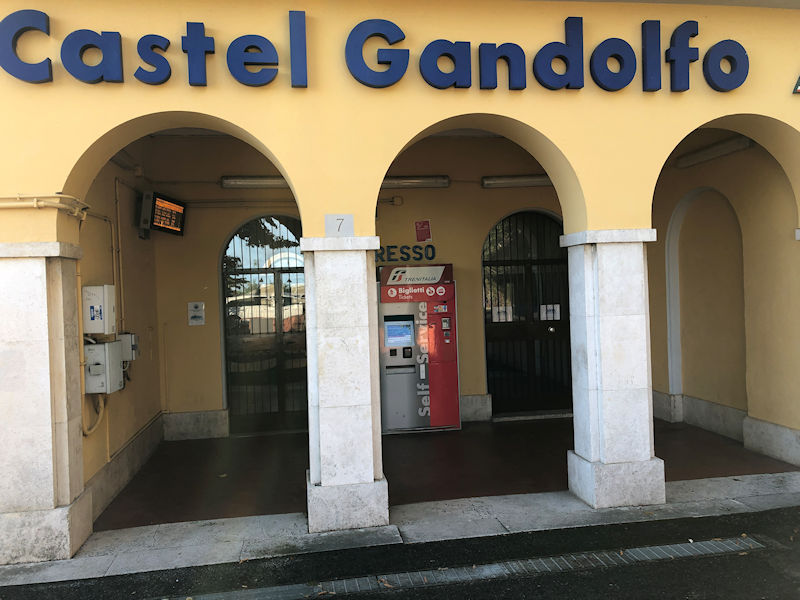
The train commute to Rome Termini is convenient, very cheap, and the downtown metro system is fairly superb, so we're off, 15 October 2023, for Kristin to meet up with old friends at the Sunday market.

We're off the subway at the Spagna station and making our way to the Piazza del Popolo.

Fine fall weather, happily
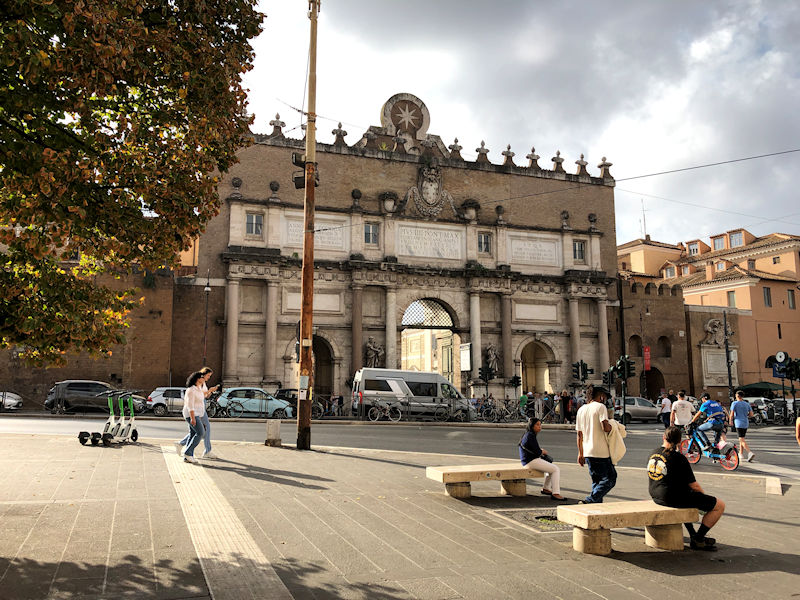
Through the Porta del Popolo, also called Porta Flaminia, because the first gate, in ancient Rome, opened through the Aurelian city walls onto the important Via Flaminia, which led northward over the Apennine mountains to Rimini on the Adriatic coast. The present version of the gateway was commissioned by Pope Sixtus IV della Rovere in the Jubilee Year of 1475.

Across the Piazzale Flaminio . . .
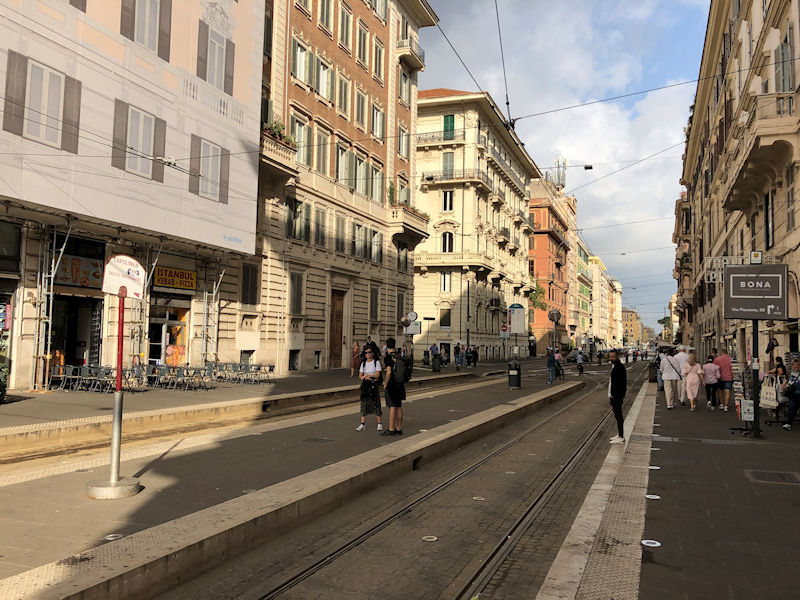
. . . for our trudge about half a kilometre along the Via Flaminia to our destination, the Sunday market called the Mercatino del Borghetto Flaminio.

The Market of the Flaminio Neighorhood, initiated in a disused bus depot yard in 1994 -- the entrance fee for potential customers is negligible, and the amateur and professional marketers can apparently hire a table for something like €80 or €90 per session, depending upon equipment requested.
The headline title seems to mean 'Junkdealers as a hobby'.

The offerings include used and new items, said to be generally of better quality than those of most 'flea markets' but with some fake merchandise mixed in, it seems.
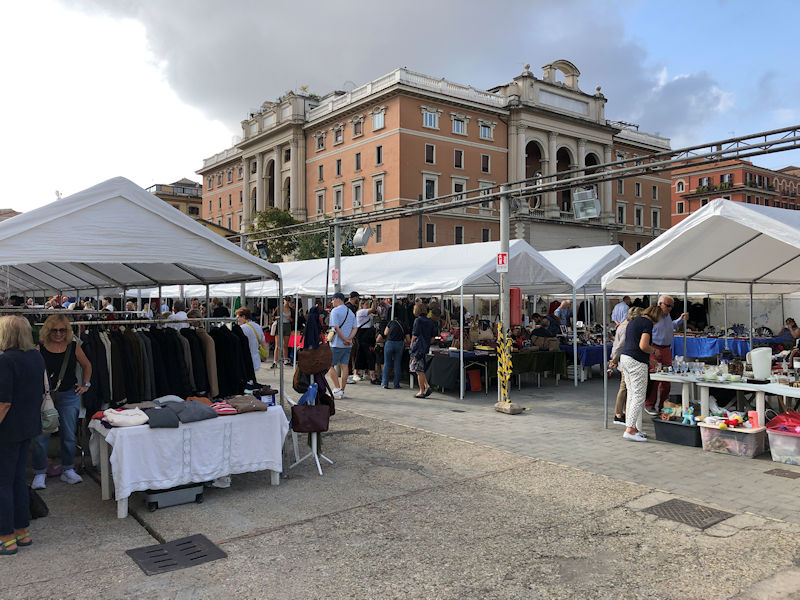
Kristin is off scoping the goods with a practiced eye, whilst . . .
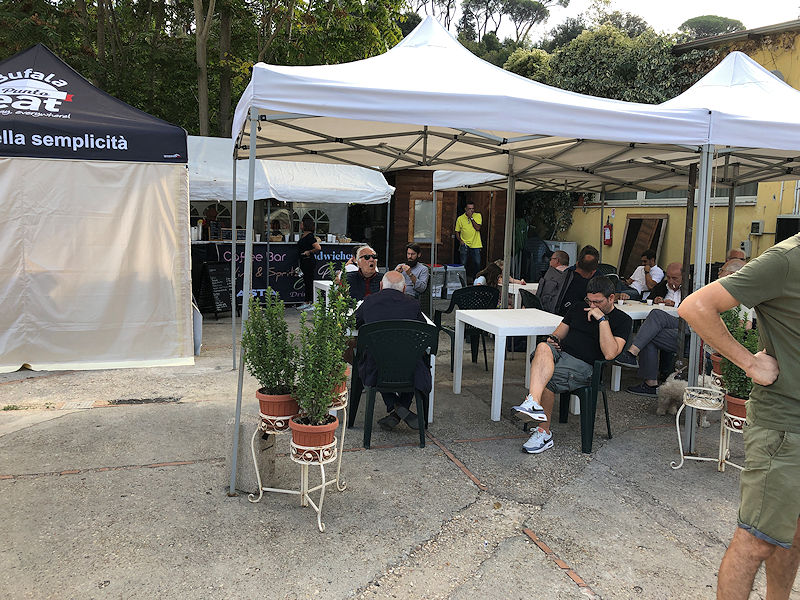
. . . our cameraman retires to the refreshments tent with some of the other husbands.

The market here seems to be universally described as the highest quality street market among the many street markets in Rome.

Kristin's an inveterate street market browser, but more importantly she's here to link up, as usual, with her friends of some 35 years or so, Ewa and Malgosha. And there are Kristin and Ewa now.

Ewa is a pro, and they've agreed to meet up when she's completed her rounds.

In the meantime, there's time for a little sandwich and another caffè americano, and some leisure time . . .
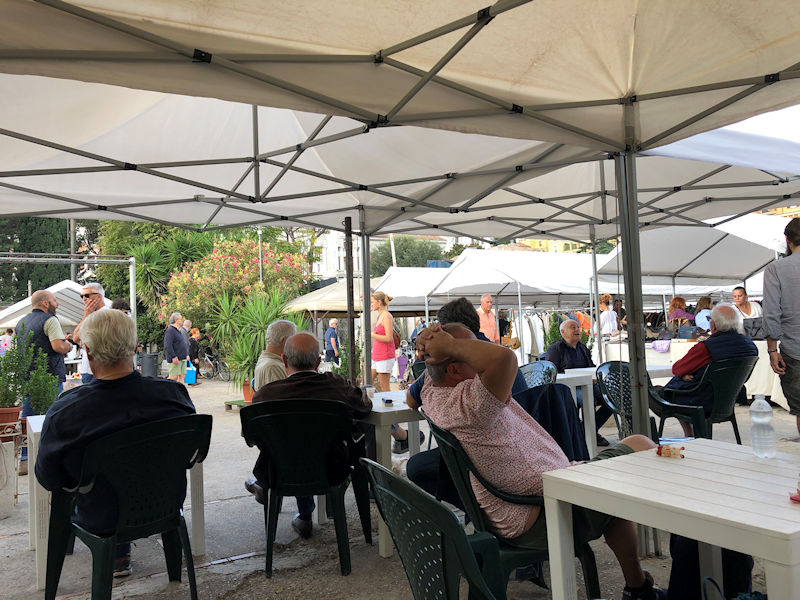
. . . amongst the other older gentlemen.
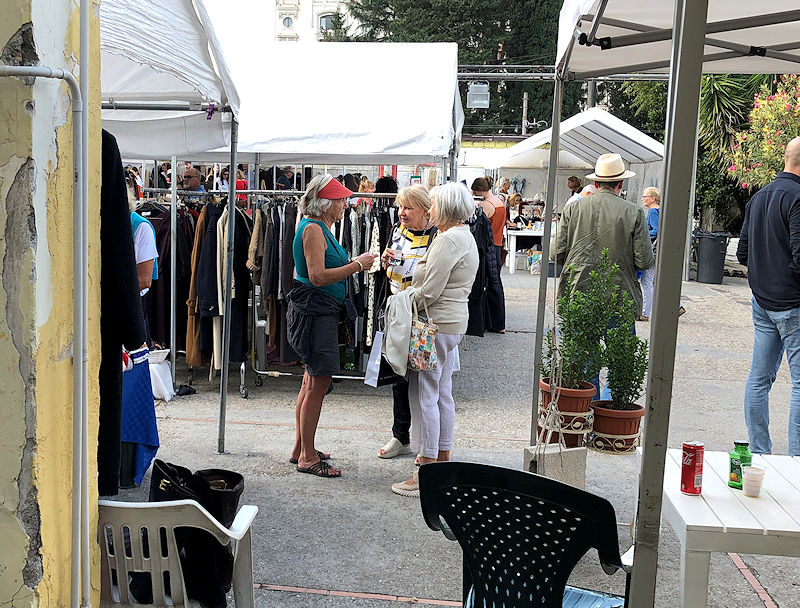
Kristin, Ewa, and Malgosha, long-time friends, have hasty catching up to do, and . . .
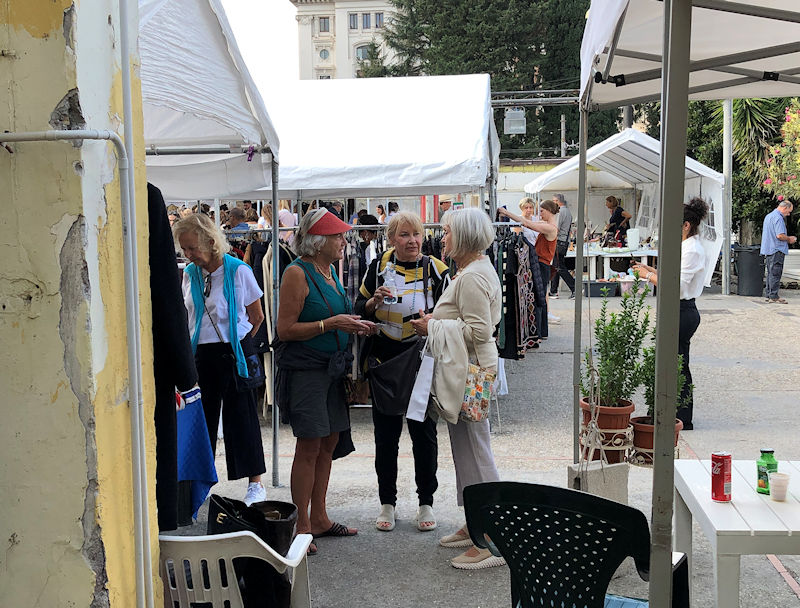
. . . plans for a lunch later in the week in Castel Gandolfo.

Following which, we walk back to the Piazzale Flaminio, with a look at the Neoclassical Propylae flanking the road up the Viale Giorgio Washington up to the gardens of the Pincian Hill, then through the Porta, and an attempt at . . .

. . . the Basilica Parrocchiale Santa Maria del Popolo, dating from 1477 with embellishments and chapels later added by Bramante, Raphael, Andrea Sansovino, and Bernini, and with two great works by Caravaggio and another by Annibale Carracci.
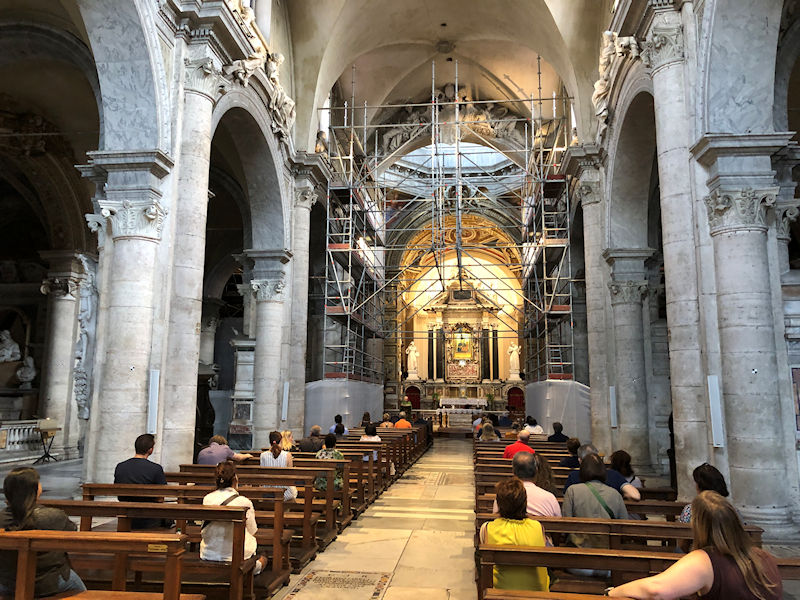
But as often as not, whenever we come to see the good stuff, the credenti are having another one of their services and we have to wander off yet again. This time, too.

The Piazza del Popolo at the foot of the Pincian Hill
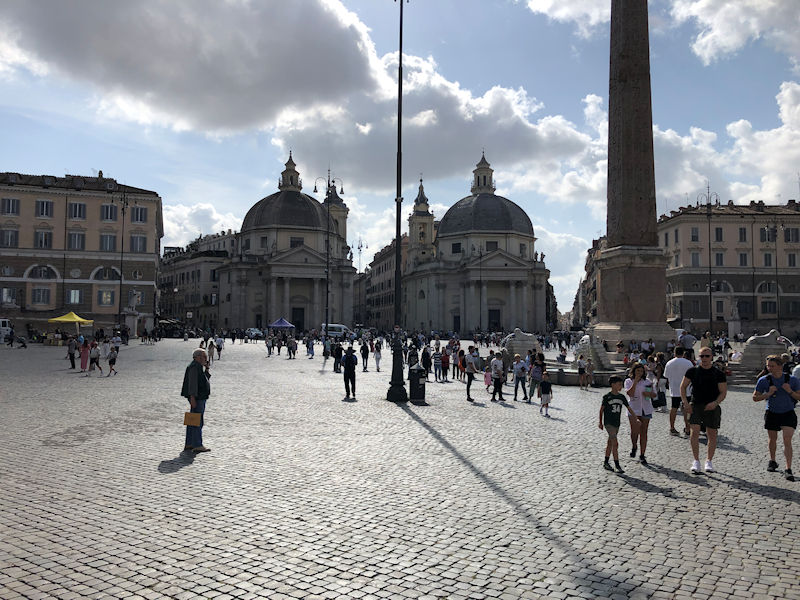
Across the piazza, the twinnish 17th century Basilica di Santa Maria in Montesanto and Chiesa di Santa Maria dei Miracoli, with the obelisk in the centre of the square
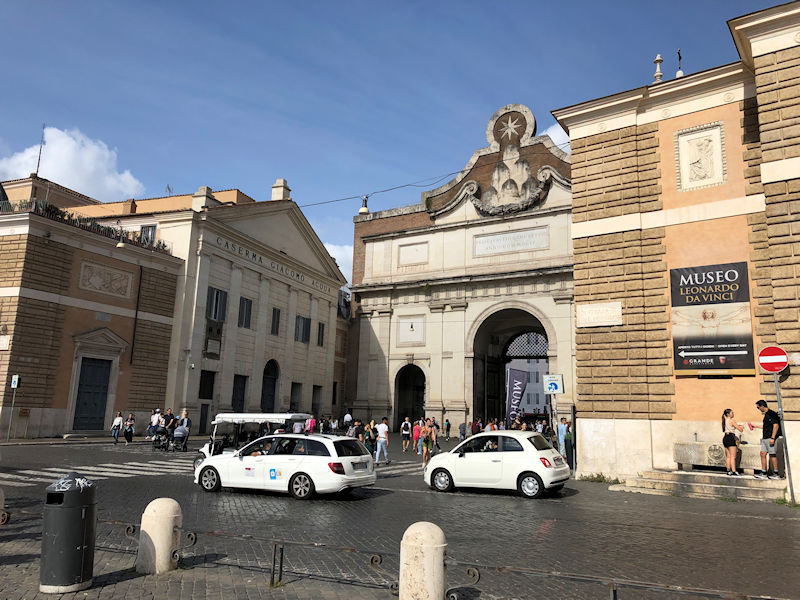
A look back at the Porta del Popolo and the basilica, with its Museo Leonardo da Vinci alongside (we looked in once and gave it a miss ['Whilst you won't see the original artworks at this museum . . .']).
After a wade through Walter Isaacson's brilliant 600-page biography of Leonardo (2017), some Leonardo fans may be taking a break for a while.
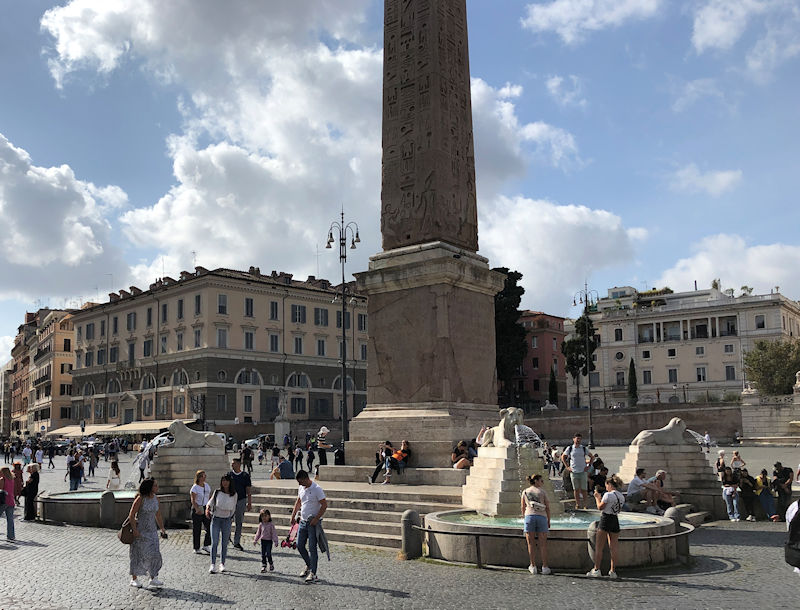
That's the 'Flaminio Obelisk', quarried in Aswan in the 19th Dynasty and brought to Rome by order of the Emperor Augustus in 10 BC, lost and then rediscovered in 1587 and set up here in 1589. The Lions Fountains round the base were added in 1823.
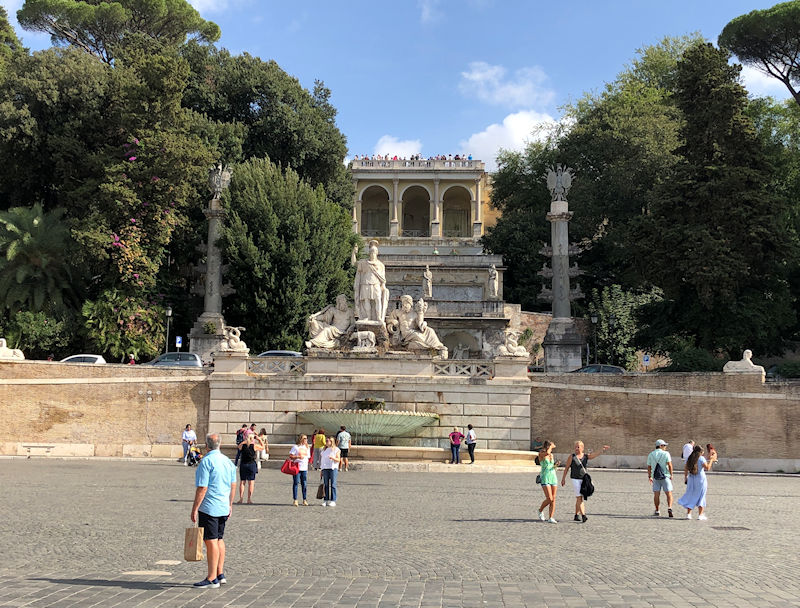
Up the Pincian Hill, with people staring down at us from the Pincian Terrace.

A closer look at the two Saint Mary churchs fronting the southern side of the piazza.
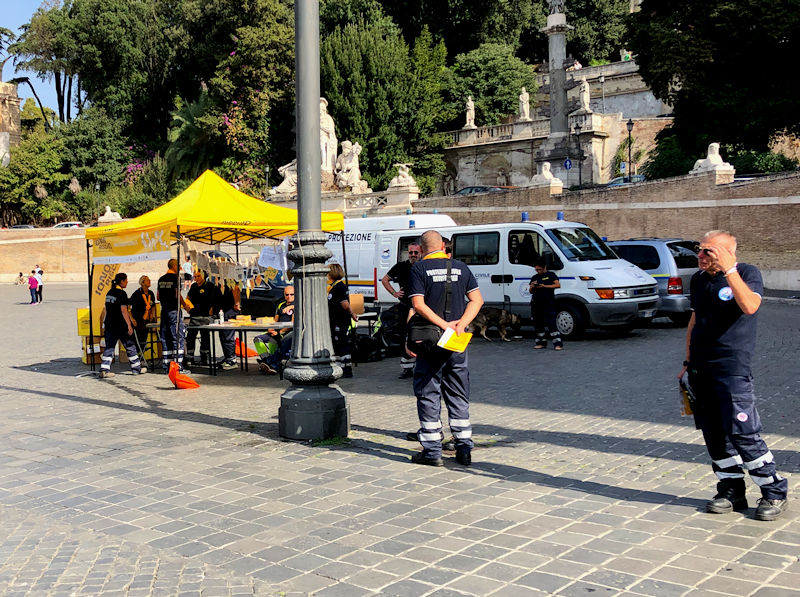
A local civil defense team (Protezione Civile), pleased to provide information and sign-up forms. (We once watched a fire department squad here taking local children through educational simulations dealing with fires.)
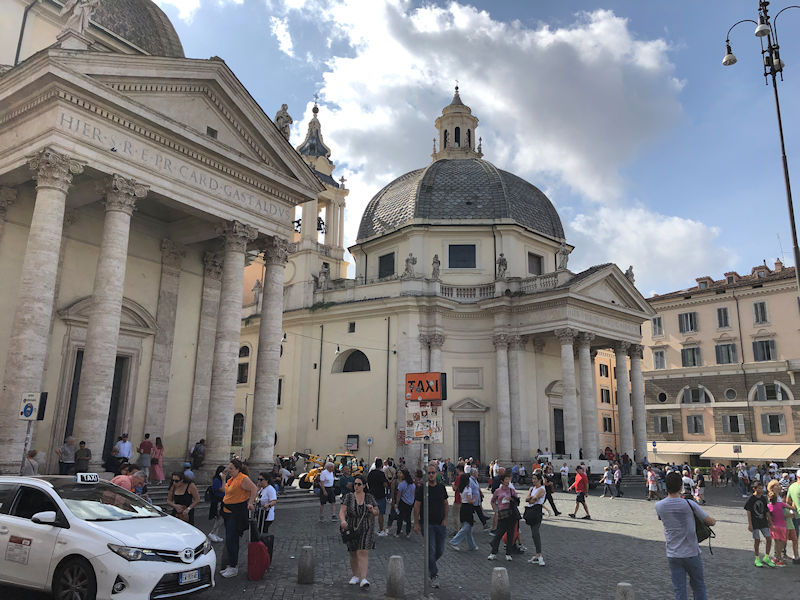
We're planning to check out the progress on rehabilitating the Mausoleum of Emperor Augustus. (We seem to be doing that every time we visit Rome.)

Now we've wandered off onto the Via Margutta ('Narrow street with pop culture history').
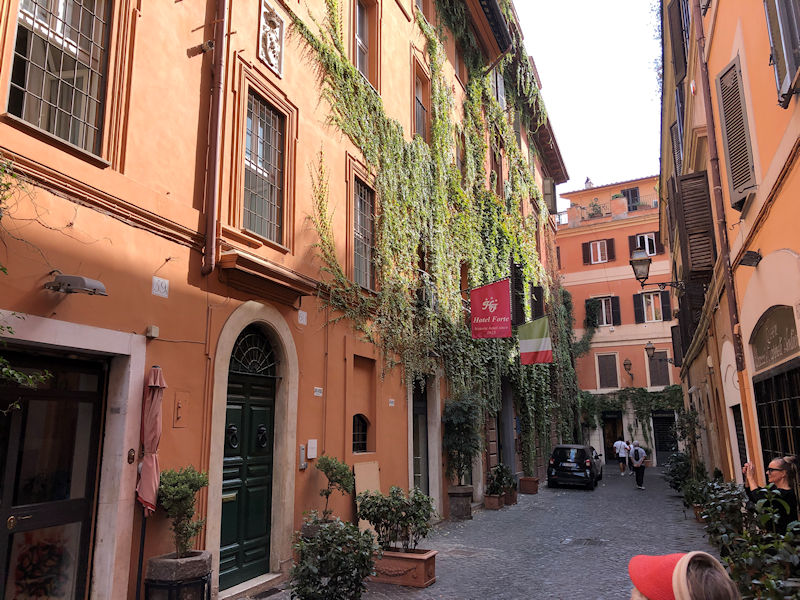
Pursuing our quest for quaint scenes along the Via Margutta . . .

. . . but now it's time to get serious about that Mausoleum.
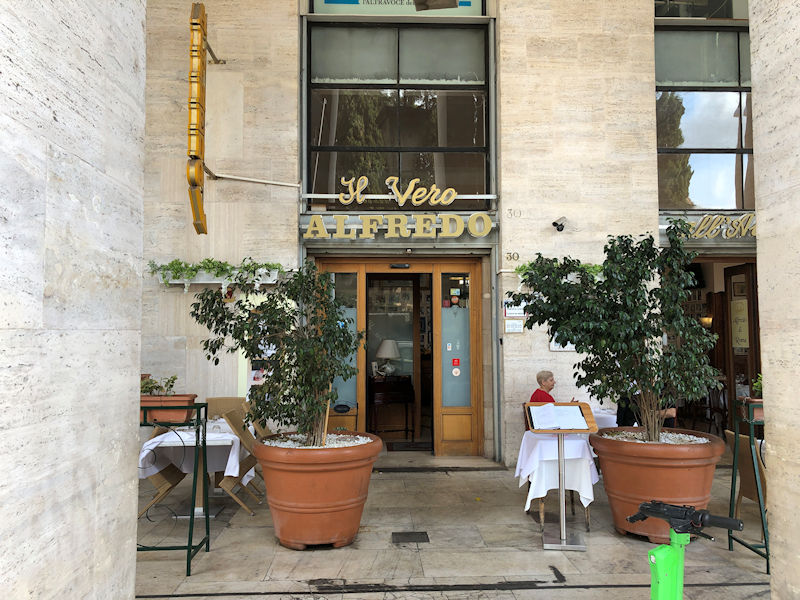
Progress. Here's 'The Real Alfredo' restaurant along Piazza Augusto Imperatore, and next . . .
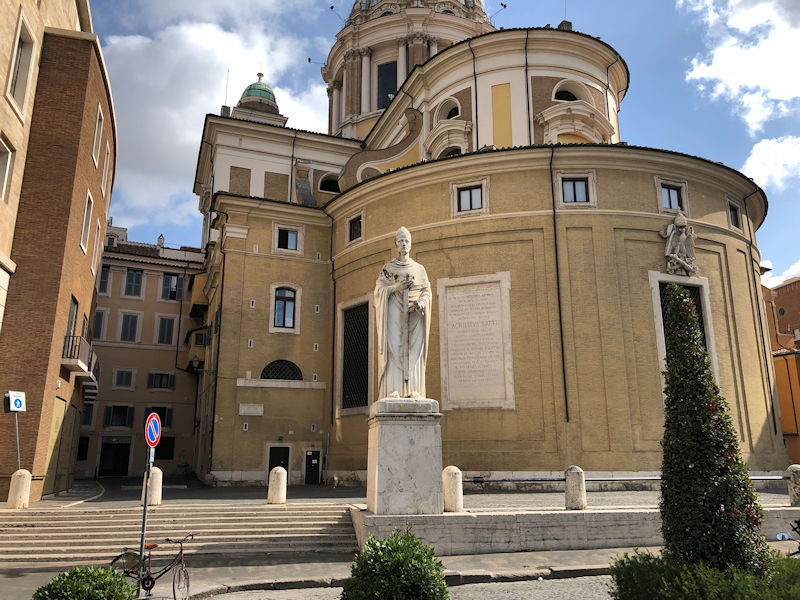
. . . across the street from the Mausoleum, this is the Basilica dei Santi Ambrogio e Carlo al Corso, i.e. the front of it is facing onto the Via del Corso main drag on the far side. This is the first time we've seen the statue of St Ambrose, the unpleasant 4th century bishop of Milan (one of the four classic 'Doctors of the Church'), without a pigeon squatting on his head, and alongside him, here's . . .
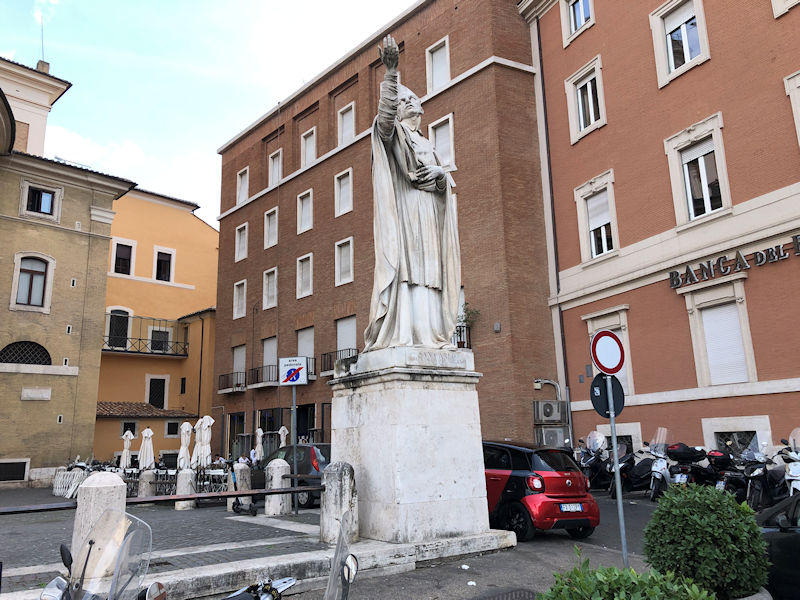
. . . the disconcerting statue of St Charles Borromeo, the 16th century Archbishop of Milan who made a great contribution to Christianity by fighting hard to suppress the Protestant Reformation. Again, no pigeon on the head.
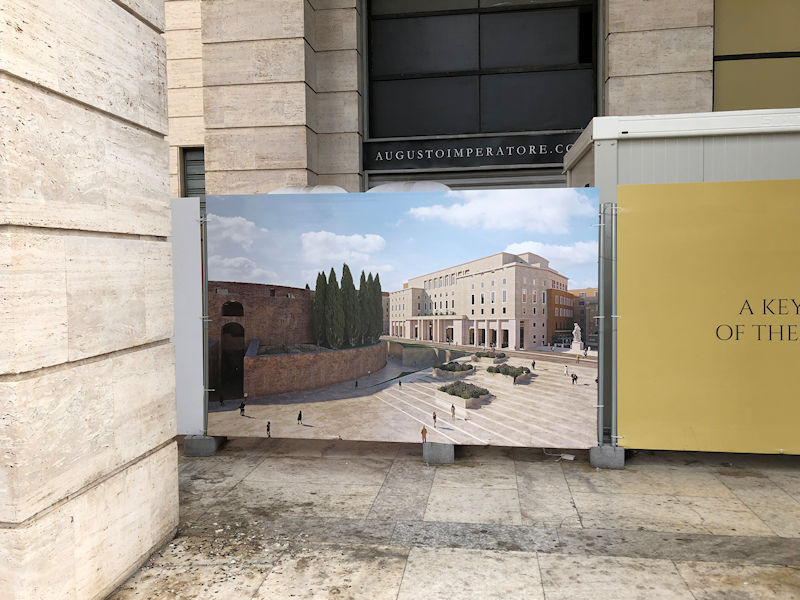
The precinct of the emperor's mausoleum is, apparently, going to be fantastic . . .
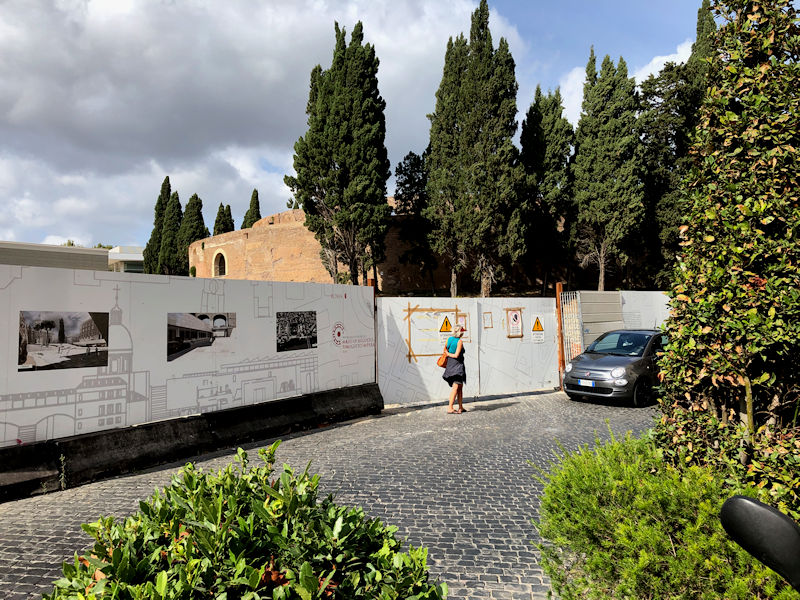
. . . but when will that be? (According to Wikipedia, the mausoleum itself reopened to the public in 2021, but we saw no sign of that.)
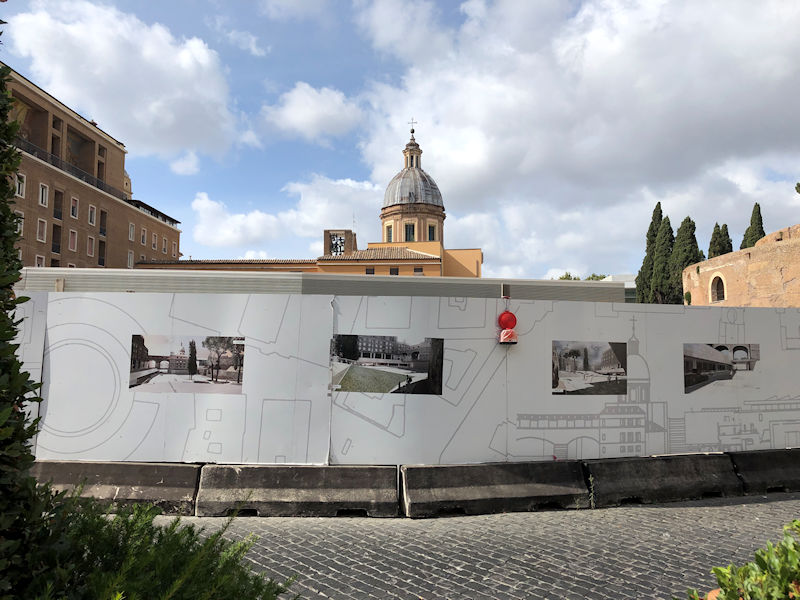
Certainly the grounds are going to need some fine tuning. They occupy a full city block, with the Ara Pacis Augustae, the Peace Altar, moved some time ago into a high-class surrounding on the far side, along the bank of the river Tiber.
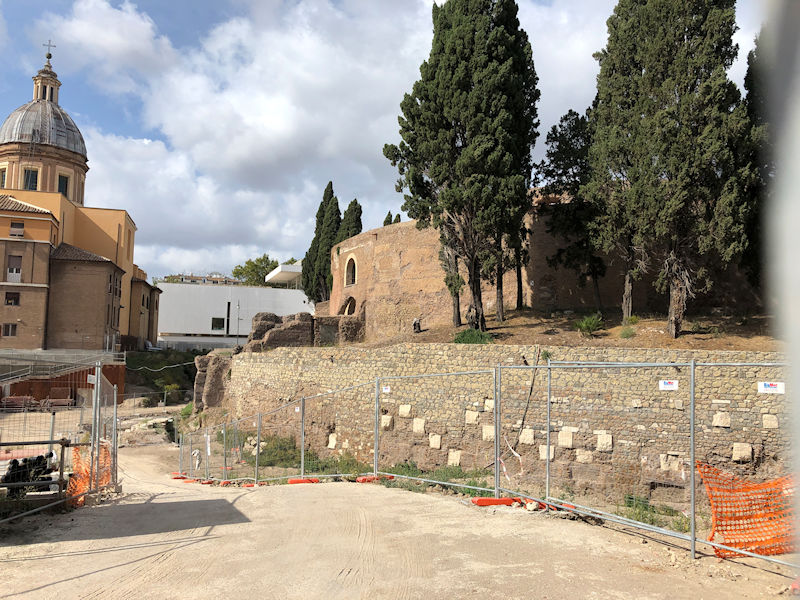
There's a peek onto the mausoleum grounds (through a hole in the fence). The mausoleum has had a long, rather undistinguished history. Initiated by Augustus after his big win at Actium in 31 BC, it was soon filled up with the remains of a who's who of the imperial family in the 1st century AD, possibly sacked by Alaric in 410, entirely buried under earth and vegetation by the 10th century, then fortified on top of the heap by the Colonna family in the 12th, passed along as a garden for important families until it was used as a circus in the 19th century and as a concert hall in the 20th, with the grounds employed as a local litter heap. It's only in the 21st century that a full restoration has been seeking funding and making slow progress.

We'll have to come back someday to get the full experience.
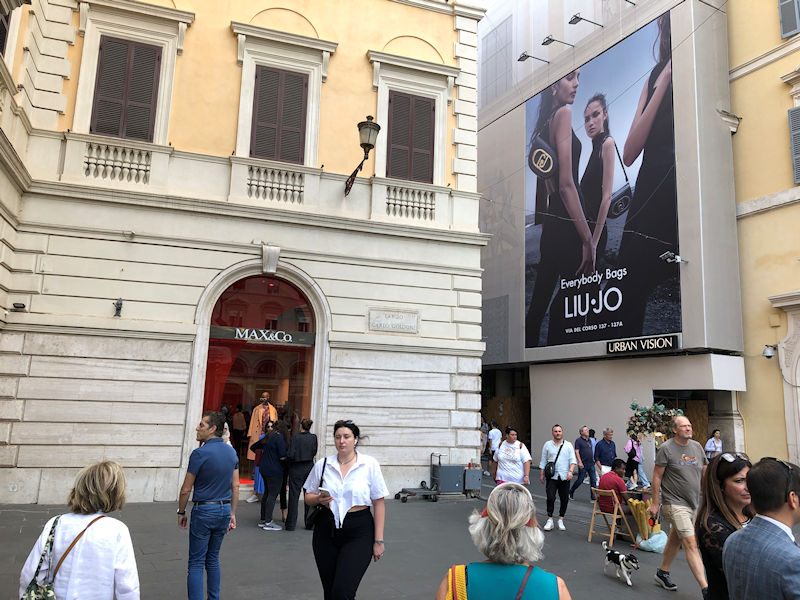
In the meantime, we'll proceed to our metro stop near the Spanish Steps. Here's Largo Carlo Goldoni, on our way to the . . .
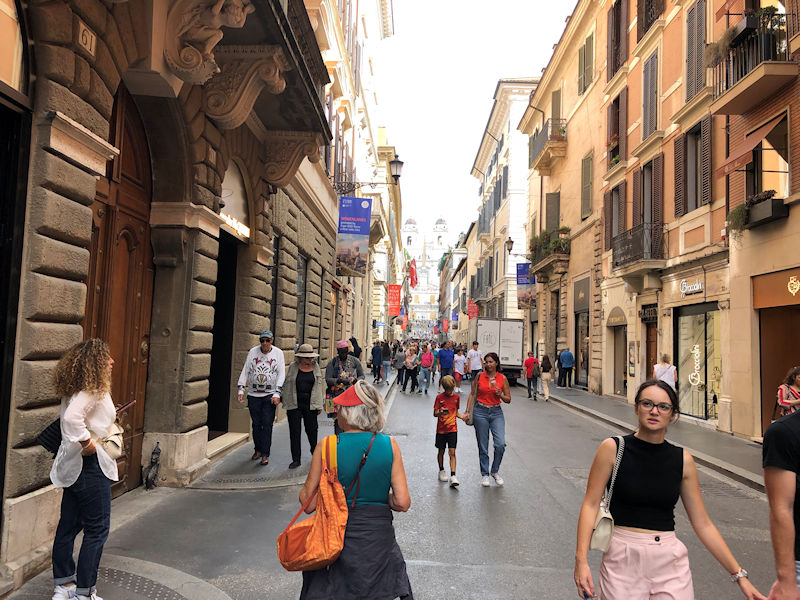
. . . pedestrian Via dei Condotti ('the street which contains the greatest number of Rome-based Italian fashion retailers'), named for the 'ducts' that once carried water from the foot of the Spanish Steps to the Baths of Agrippa.
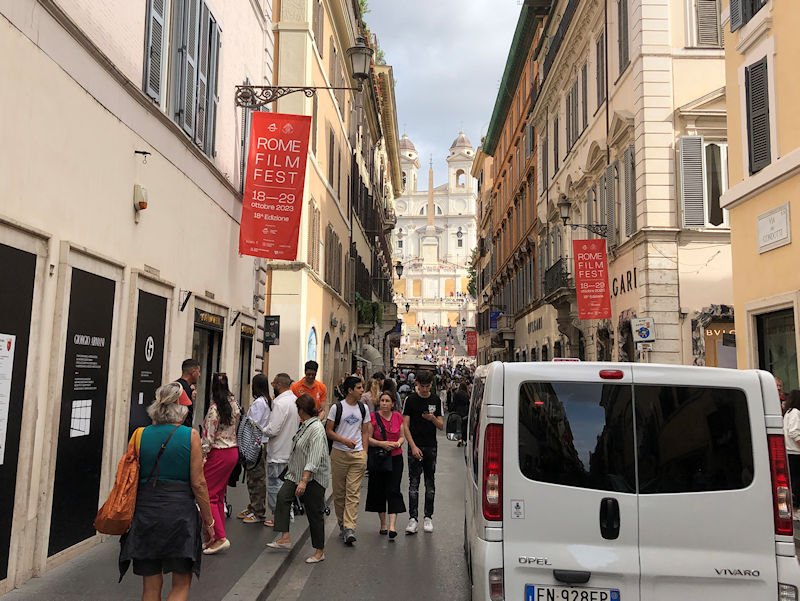
The 16th century church of the Trinità dei Monti appears above the Spanish Steps.
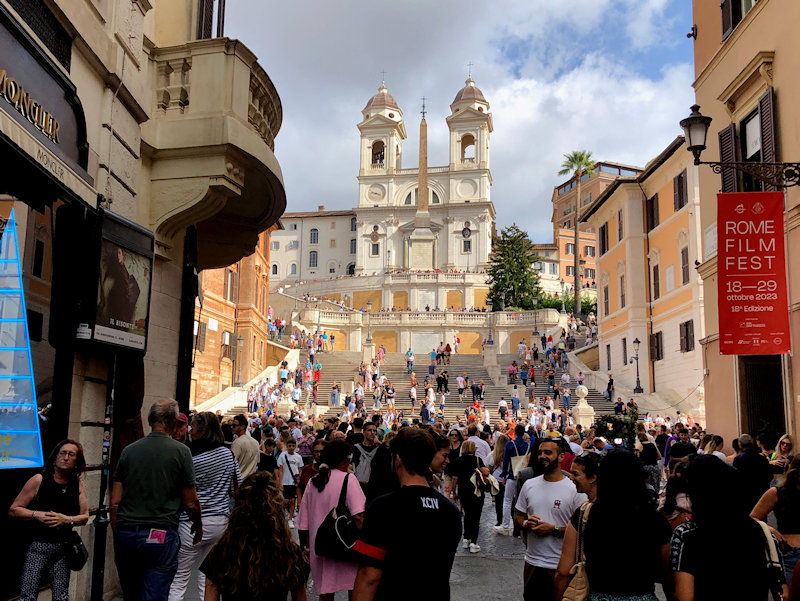
The obelisk in front of the church is the Obelisco Sallustiano, made in Rome on the Egyptian model. The Spanish Steps, properly the 'Scalinata di Trinità dei Monti', were built in 1723-1725 to connect the Bourbon French-owned 16th century church of Trinità dei Monti, on the flank of the Pincian Hill, with the embassy of the then-Bourbon kings of Spain to the Papal Court near the bottom of the steps.
There is a famous fountain in the shape of a ship, the Fontana della Barcaccia ('Longboat Fountain'), created in 1627-1629, possibly by Bernini's father, in the centre of the piazza before us here, entirely submerged under teeming humanity.
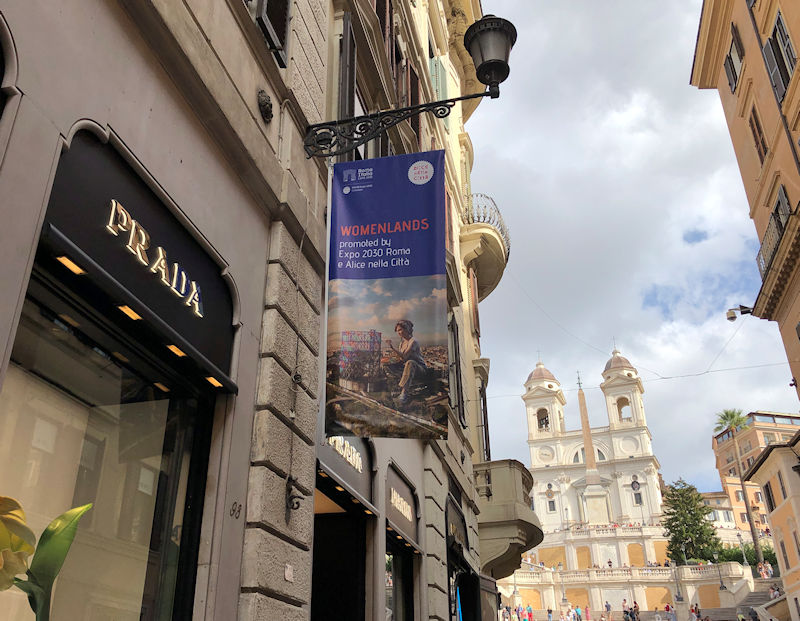
'Womenlands'
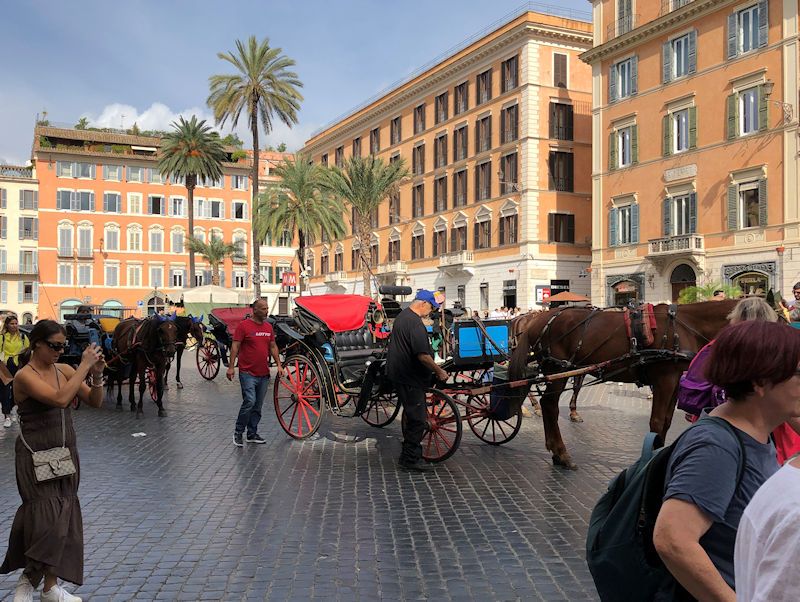
No room for cars here in the Piazza di Spagna, but horses . . . well . . .

The Piazza di Spagna is 250 meters long, and this is one half of it, with the Flaminio Obelisk faintly visible farther down the Via del Babuino in the Piazza del Popolo.

The red banner on the building indicates the rooms where the poet Keats lived and died in 1821, now the Keats-Shelley House, a museum and library dedicated to the English Romantic poets.

The steps have been most recently restored in 2015-2016. There was a time when teeming humanity sprawled all over these steps, often with picnic lunches or half-litre tins of beer, but since 2019 there's been a €250 fine for sitting on the steps, which is apparently working well.

Of course, sitting in dedicated sitting zones, like in front of this tea room, is welcomed.
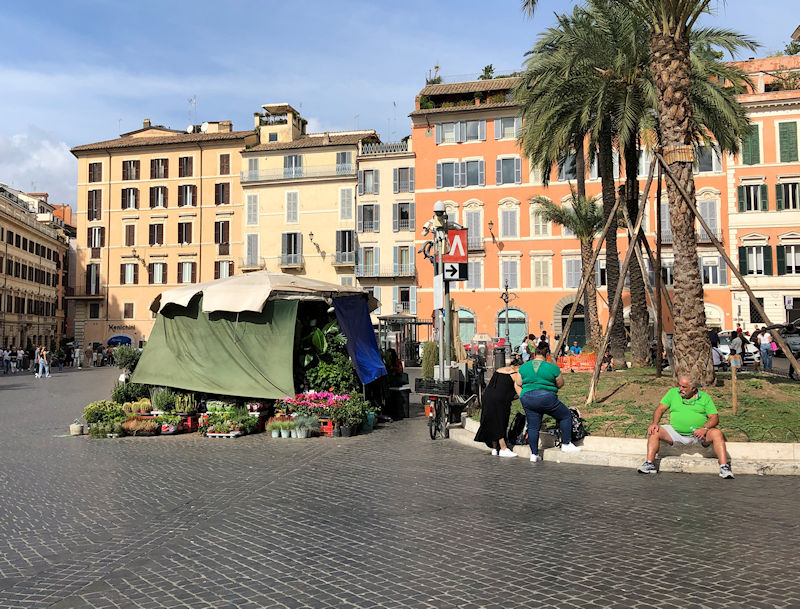
Sitting near palm trees is also permitted, however unattractively.
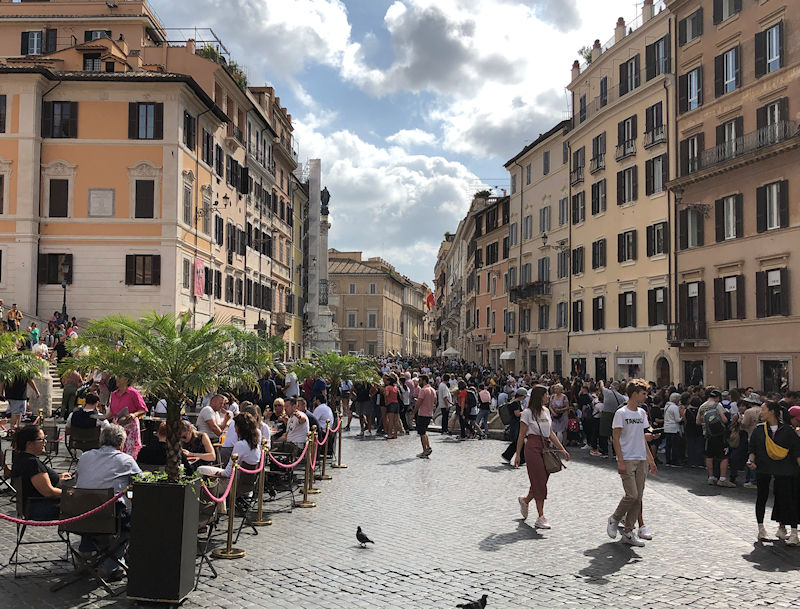
By a rough count as we hurry by, there are just short of 1.2 million people in the piazza today.

Onward to the metro
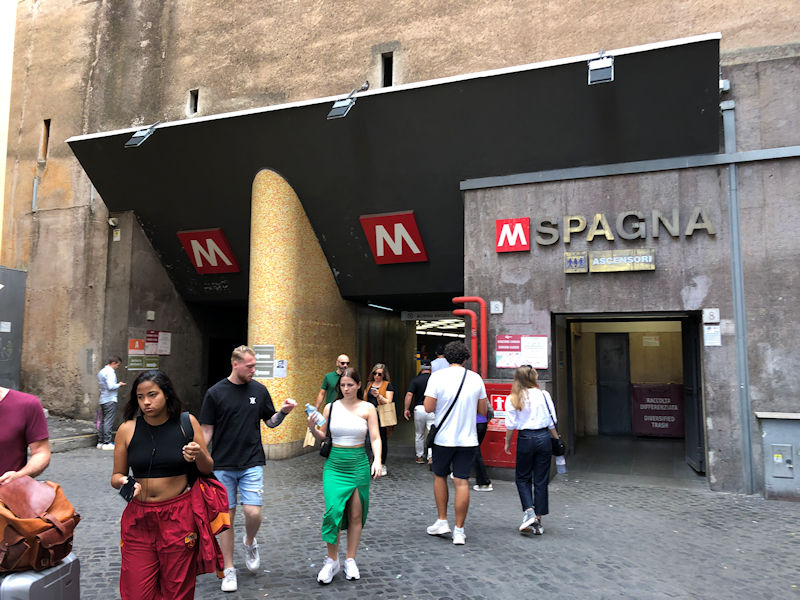
Rome's rapid transit system, inaugurated in 1955, consists of two lines in-town (and one other, for the suburbs) -- it's very attractive inside, fast and clean, and very inexpensive, and both the A and B lines pass through the central rail station, Roma Termini.
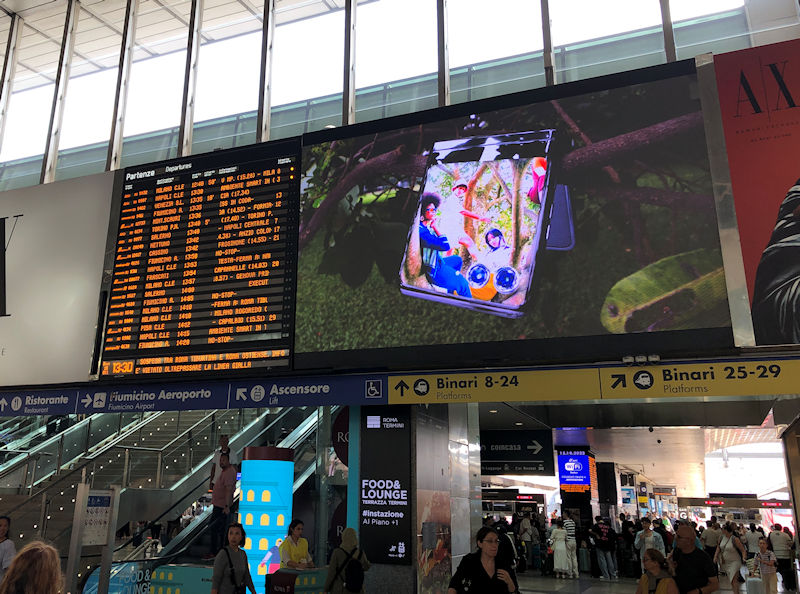
But Roma Termini can be a massive headache. Very few sources of information without long lines, and the slots for local trains out to nearby destinations (like Castel Gandolfo) are a long march far off to the side (i.e., Binari 25-29).
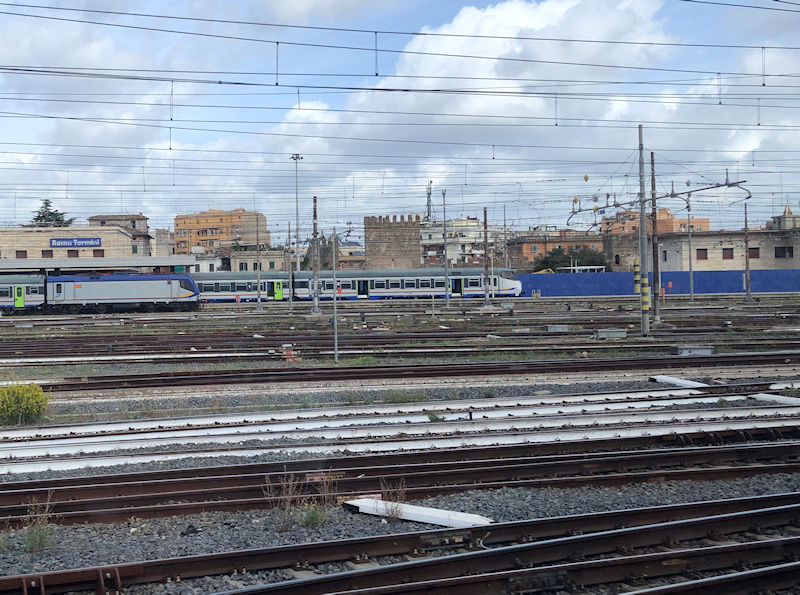
But whilst waiting for your train to set off, you can admire the remains of the ancient Aurelian Walls (AD 271-275).
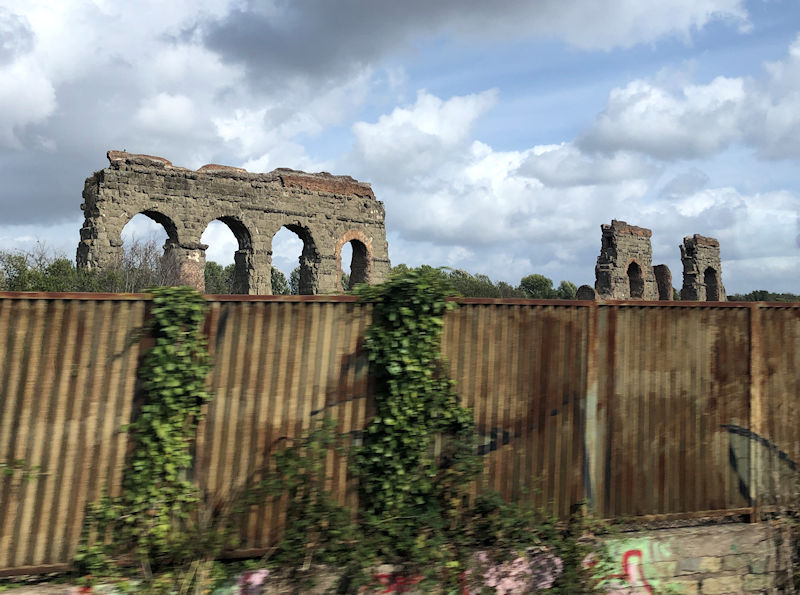
In fact, as you ride comfortably along, you can continue to admire the Aurelian Walls for a while, if you wish.
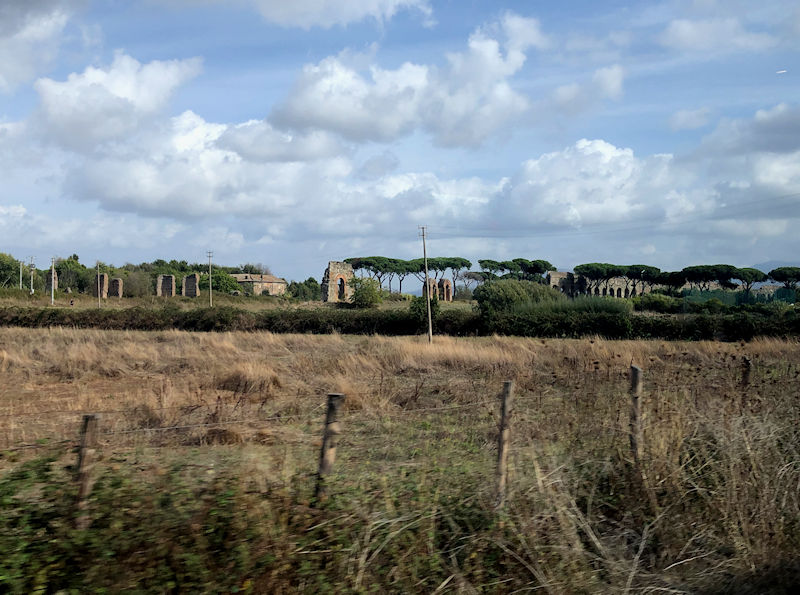
Even out a ways into countryside . . .
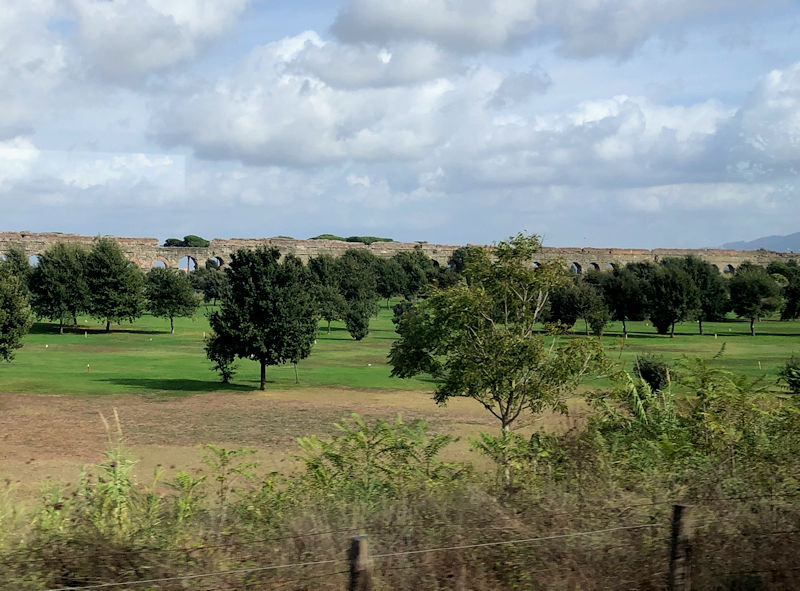
. . . augmented by what appears to be a Roman aqueduct.
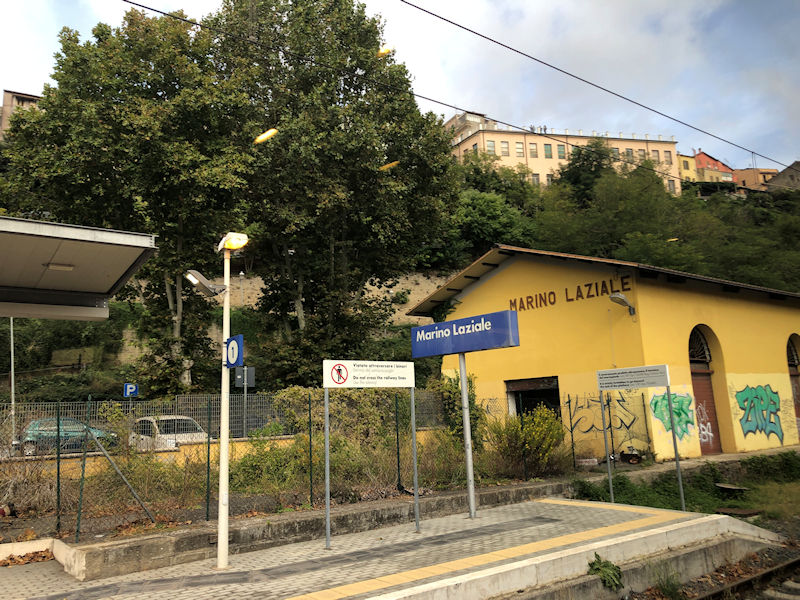
Soon we're stopped briefly at Marino Laziale, the town just outside the rim of Lago Albano's crater, our last stop before Castel Gandolfo, on the . . .
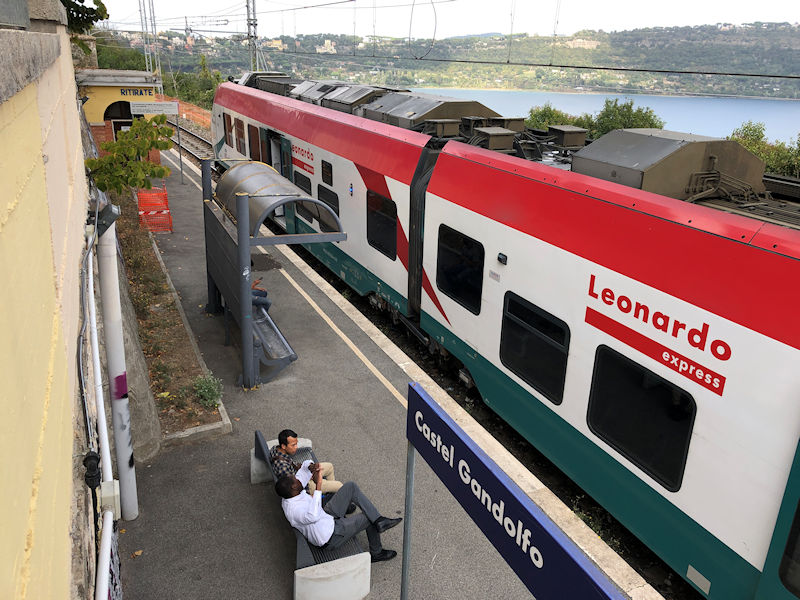
. . . Leonardo Express.
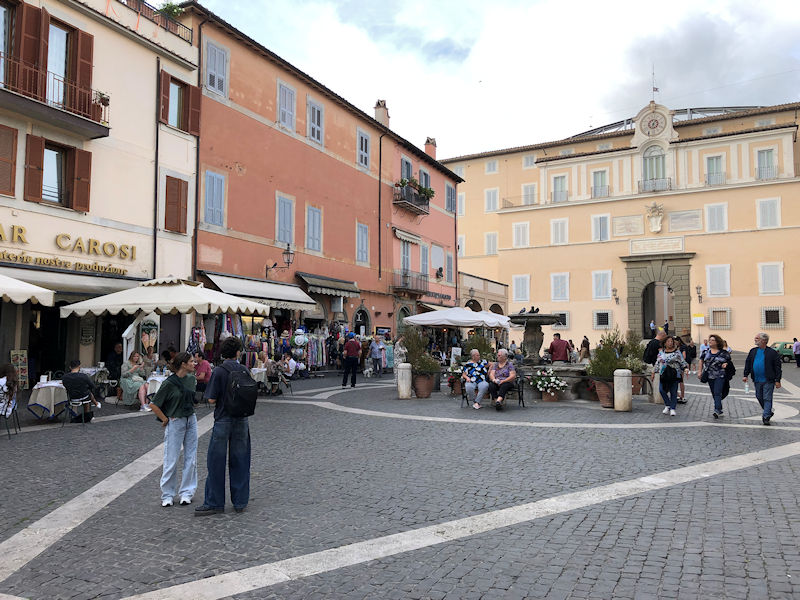
There's a zig-zaggy path directly up the hill from the rail station to the Piazza della Libertà. And it's brutal.
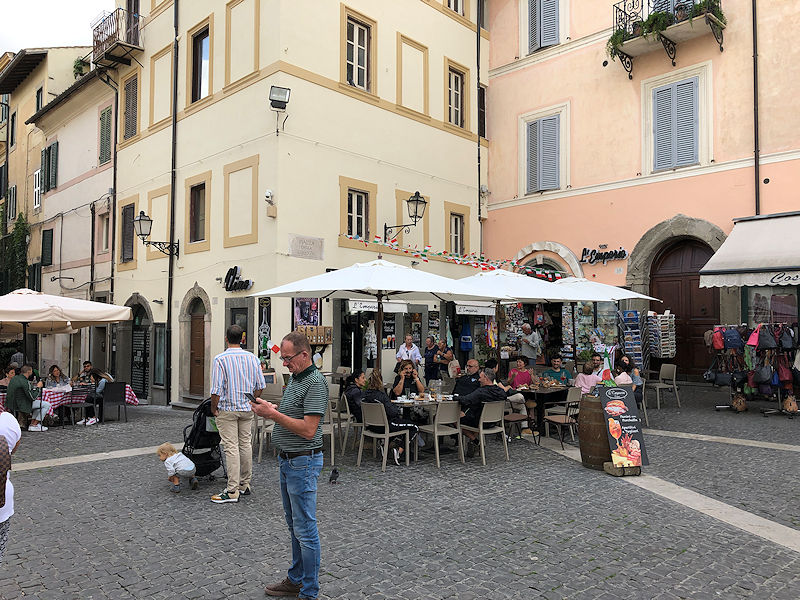
The Emporio di Cagnoli Elia proved to be one of two life-saving nearby convenience stores for acquiring required refreshments at short notice.
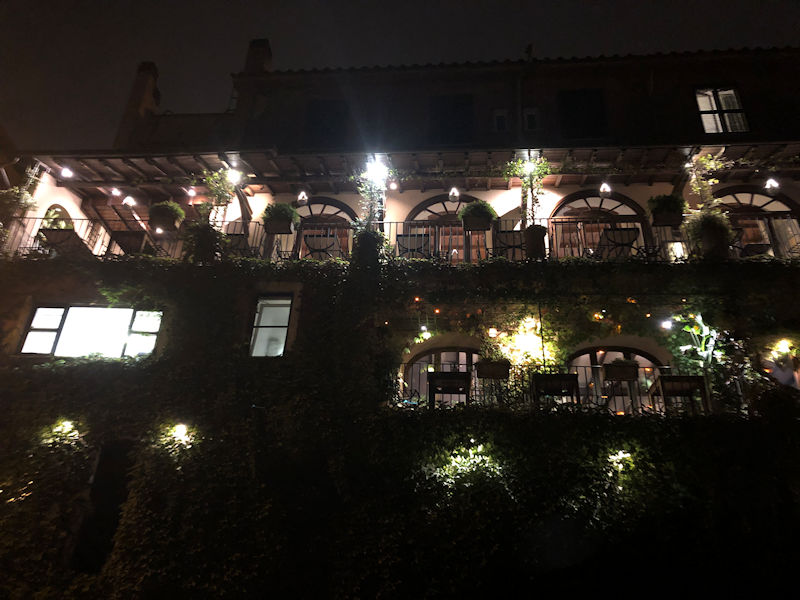
Soon enough it's time for another fab dinner on the balcony just up the road at the Ristorante Pagnanelli . . .
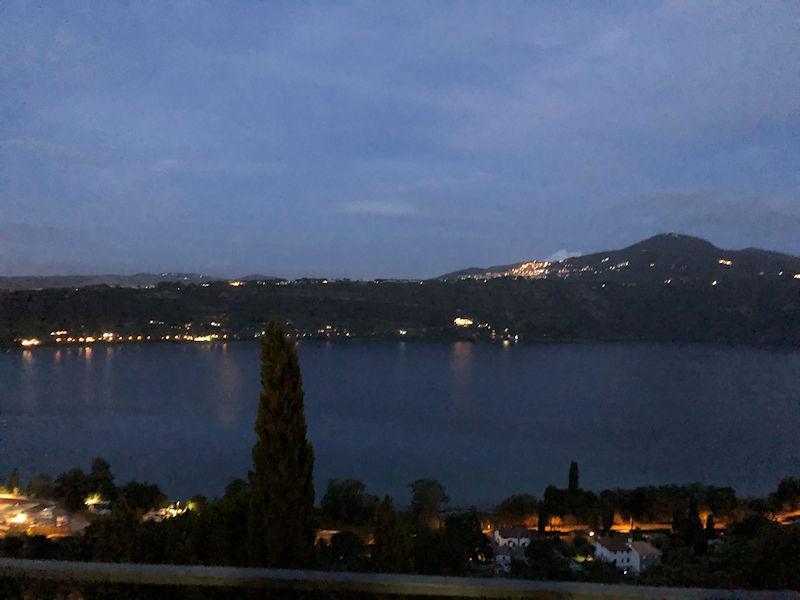
. . . with a grand view over the lake, and (as always in Italy) . . .
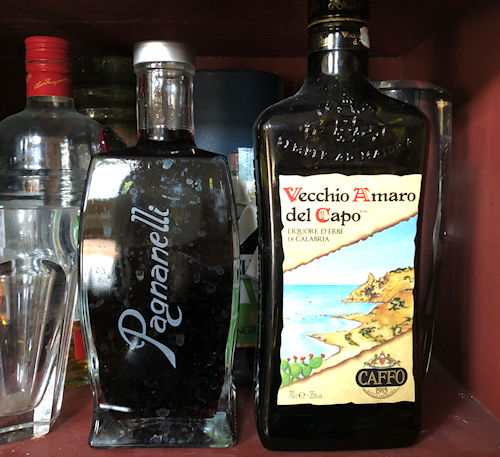
. . . one or two wee amari afterwards (Del Capo by preference).
The other bottle, both presently in our cupboard at home, is the Pagnanelli's own cherry amaro.
Next up: Very brief visits to Castel Gandolfo's nearest neighbors










 Dwight Peck's personal website
Dwight Peck's personal website
























































































